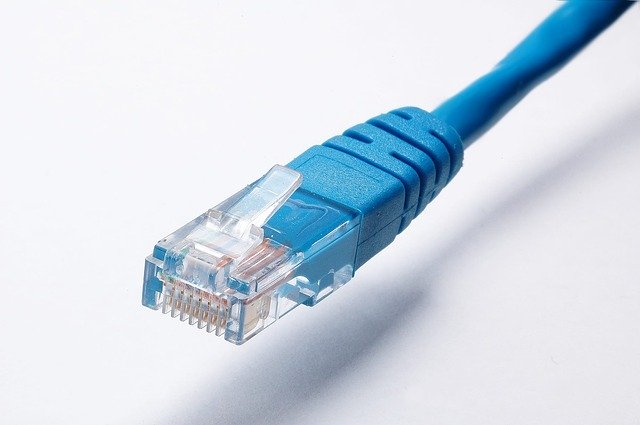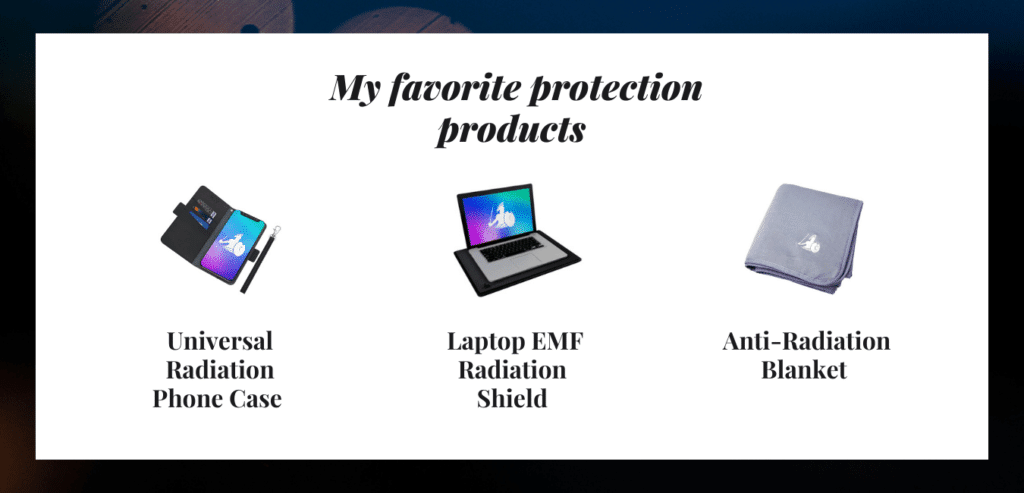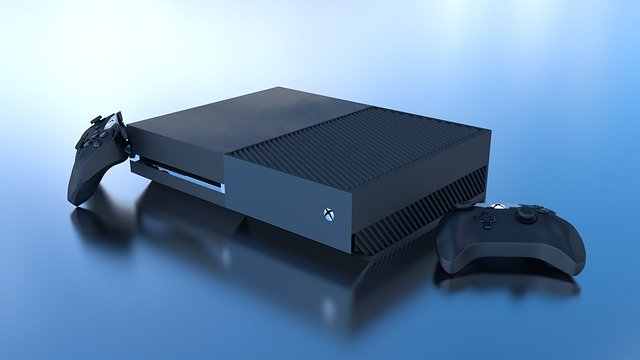
Using An Ethernet Cable doesn’t just reduce EMF levels but they stop it altogether. When the internet is delivered via cables, there is no radiation emission at all.
In my opinion, the CAT8 Ethernet Cable is the best one to get. order it on Amazon here.
It can be said with any shred of doubt that the society of today is largely built on the back of the internet.
Back when it was first brought in the mainstream in the late 80s and early 90s, there were very many people who scoffed at the idea and even made fun of the scope of it all.
But three decades later we can all agree that the overall internet has been a force for good.
It has helped us accomplish tremendous things and its contributions are pan-industry. From telecom to business to sciences to medicine – there isn’t a field that hasn’t benefited from the advent of internet.
As we innovated more and more, we have also bettered our way of delivering the internet to the common folk. I remember a time when in order to go online, you had to sacrifice calling someone.
The whole system was dial-up and it made weird whirring noises while it connected. And God forbid if someone called you in the middle of it all – everything would hang up and you’d have to restart your machine.
Long gone are those days. Today, you can enable high-speed internet with the press of a button.
The speeds that we are able to achieve today are multiple times faster than before and the connections are stable enough to not be interrupted even when you get a phone call if you’re browsing from your cell phone.
But perhaps the biggest revolution in internet tech happened when we figured out a way to take things wireless. Internet setup was always cumbersome with a bunch of wires and because of that it really limited the mobility of the device which is connected to the internet.
If you were working on a laptop, for example, you could only move the laptop to the point the wires would permit. Else the connection would get lost. However, with the innovation of wireless tech, the internet started to be delivered wirelessly.
We came up with a brand new technology called wireless fidelity (abbreviated Wi-Fi) that allowed computers and other smart devices to be connected to the internet wirelessly over short distances.
This really blew up and more and more people moved to that setup in favor of convenience and ease of use. However, it also had some serious drawbacks that weren’t given as much consideration.
The Wi-Fi tech used radiation to communicate with the devices it was connected to. These radiations could be harmful to our health and wellbeing.
That sparked a debate over if the wireless internet is safe for use at all. The debate was further renewed a few years ago when scientists found evidence that linked certain health issues to be a direct result of radiation exposure.
In this article we venture to find out about wired vs wireless internet, the benefits of wired connections, and if Ethernet cables indeed help reduce radiation levels.

| Universal radiation phone case | Check price here |
| Laptop EMF radiation shield | Check price here |
| Anti- Radiation blanket | Check price here |
Wired vs wireless
The Internet was traditionally delivered over the wire from its inception. We used telephone wires at first but later switched to Cat 5 and Cat 6 wires to deliver high-speed internet from ISPs to the home computers.
The computers are equipped with modems that help in modulating and demodulating the data sent over the wires and enables smooth operation. 90% of the internet is still delivered by wires to this day and only a very small percentage of the area is covered wirelessly.
Wired internet connections are more stable and secure than wireless ones. Plus they also allow for more robust data transfer speeds. Transatlantic connections where cables are laid on the ocean bed to connect all countries to the internet is done through optic fiber wires.
Wires are used because they are cost-effective and offer the most practical solution. That apart, most government buildings and security installations use wired connections because they are protected against hacking and things of that nature. You can hack a wireless network but you can’t hack a wire.
Wireless, on the other hand, are growing to be increasingly popular, and more and kore places are offering wireless internet for people to log into and use.
Most homes that have internet connections would choose to opt for a wireless one because it allows them to freely connect to the internet from all smart devices at the tap of a button. Public spaces too are becoming more and more Wi-Fi friendly.
Today, most libraries and other public spaces offer free wireless internet services that you can log into and start browsing. Eateries too like Starbucks and McDonalds offer free Wi-Fi for its customers.
However, if we were to look deep into the workings of wireless connectivity, we would find that these networks are enabled by emitting high energy RF radiation and encoding the data within those frequencies.
These radiations are quite harmful to our bodies and have been shown to be a direct cause of multiple health complications. Then the question becomes which is the better option?
Wired internet connections offer a far more secure and stable connection than wireless. They also have zero risks of radiation emission. However, they can be quite messy because of the
wires and limits movement of devices. Plus, you won’t be able to connect wirelessly to the internet from your smart devices if you aren’t using cellular internet services.
Wireless, on the other hand, has zero restrictions in terms of movement. With an effective range of 10 meters, Wi-Fi enables users to connect multiple devices wirelessly to the same network at the same time.
Also, there is no hassle of wires in the case of wireless. That said, it does come with a huge risk of radiation exposure.
As we’ve mentioned, exposure to this type of radiation regularly can cause serious health issues including chronic conditions like diabetes and cancer, and thus we need to be very vigilant about the levels of exposure that we are exposing ourselves to.
Thus ultimately the choice comes down to our individual risk appetites. Personally, I don’t think anything is worth compromising on health. However, people have different priorities and that too needs to be understood and respected.
In that case, they can consider anti-radiation products that help in blocking out all the harmful radiation from reaching their body.
So can Ethernet cables help in reducing radiation levels?
Absolutely! They don’t just help in reducing EMF levels but they stop it altogether. When the internet is delivered via cables, there is no radiation emission at all.
The cables carry the message through them in an analog format which gets converted to digital at the modem of the computer. Ethernet cables are typically connected to the computers by RJ 45 connectors which act as an interface between the wire and computer.
Not only does it reduce the RF radiation but also EMF since there is no need for a router anymore in your home. You also save a bunch of money on electricity bills since you don’t have to have your router running all day every day.
That apart, internet-delivered through Ethernet cables tend to be more stable and secure as well. The stability comes from the fact that it is delivered through wires and no data packets are lost in transmission.
Thus for resource-intensive work like uploading or downloading large files, wired connections are preferred. This is because they give a stable uniform speed throughout the download or upload process and the computer doesn’t need to work as hard to accomplish the task at hand.
On the security front, it is nearly impossible to hack wired connections while its child’s play to do so in wireless ones. If you went on YouTube right now and searched how to hack Wi-Fi connections, you’d be flooded with videos showing you step by step processes of how to do just that.
You don’t even have to be an expert to follow through. It really shows you just how insecure these wireless networks are and how easy it is for someone to steal our confidential information like bank details and passwords.
Ethernet cables have some significant advantages over Wi-Fi in my honest opinion.
If you can overlook the wire situation and the convenience of mobility, wired connections make a lot of sense. They have zero risks of radiation, provides a more stable connection, and has better overall security – what’s not to like?
The way forward
I always advise people to chuck their wireless setups and go for Ethernet cables instead.
Sure it would need some getting used to but once settled, you can actually see the benefits. However, I also understand that it is not the most practical solution for everybody. So what to do? Is there a middle ground here?
Yes, there is. If you cannot get rid of your wireless connection just yet, consider investing in good quality anti-radiation products.
These are amazing things that protect your body from radiation exposure. However, pay attention to what I just said – good quality. That is the operative keyword here. The reason being this is still a pretty niche market which means it is not as strongly regulated.
This allows for a lot of subpar products to be sold in the market by people who’re looking to earn a quick buck. Be very cautious of that and read reviews thoroughly before going through a purchase.
If you need a starting point, we have curated a huge list of products that we personally use and recommend. All the products on our list are backed by science and individually verified for efficiency by us.
If you are interested in this field and want to read up more, we have a ton of articles for you to peruse through. Happy reading!
My personal favorite EMF detection and protection products
- DefenderShield EMF Radiation Protection Blanket – Ultimate protection from wireless radiation. The only EMF radiation protection blanket with multiple layers of shielding to block up to 100% of wireless (RF) radiation from cell phones, tablets, laptops, WiFi routers, and other electronic devices, and ambient emissions in the environment. Available here.
- DefenderPad Laptop EMF Radiation Protection & Heat Shield. The DefenderPad is the ONLY laptop pad that uses multiple layers of shielding to block up to 100% of laptop EMF radiation (RF & ELF) while also greatly reducing heat! Get the latest price here.
- DefenderShield Universal EMF Radiation Protection Pouch for Smartphones – EMF shielding to block up to 100% of wireless (RF) radiation. Most pouches only block a percentage of radiation emitted from your cell phone. Shielding is within the backside of the pouch to block signals and EMF emissions going towards the body, yet does not interfere with phone connectivity. Available here.
- Copper Fabric Blocking RFID/RF-Reduce EMF/EMI Protection Conductive Fabric for Smart Meters – Very easy to cut and sew. Usage for Bags, Curtains, Tents, etc. Effective Shielding for CellTowers, Microwave Signals, Phones, and Smart Meters. Find it here.
- TriField EMF Meter Model TF2. is an AC gaussmeter, AC electric field meter, and radio power density meter in a single unit, that combines all the features needed for fast, accurate measurements of electromagnetic fields (EMF). Best price on Amazon here.
Related questions
- How do I check for radiation levels in my home?
Radiation is a major concern and more and more people are discovering the dangers of it every day. It is understandable that you want to measure your home’s radiation levels and act on it.
To do so you’d need to buy an EMF meter. These are instruments that accurately tell you the correct EMF radiation levels and the direction from which they are emitted. If you’re interested, we have a great article on the best EMF meters to buy for your perusal.


